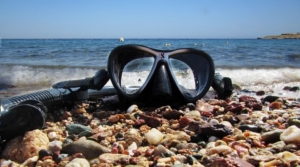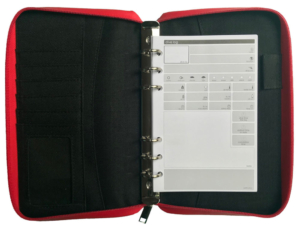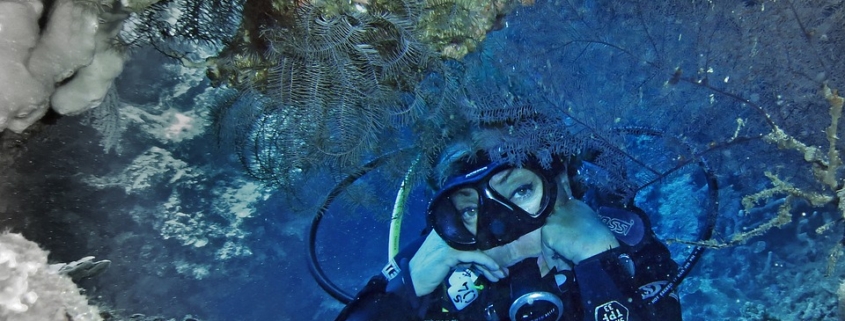How much equipment do you typically use when scuba diving? There’s no denying the fact that diving requires a fair amount of equipment. And if you don’t bring the right items, you may be forced to wait on the boat while the rest of your group dives.
With that said, many divers make the mistake of overpacking. While there’s nothing wrong with being prepared, packing unnecessary items may leave you feeling overburdened. You’ll have to keep up with each item that you bring, which is both stressful and laborious. By packing light, however, you’ll have a safe and enjoyable diving adventure without being encumbered by unnecessary equipment.
Scuba Mask
 You’ll obviously need to pack a scuba mask for your next diving adventure. Some divers neglect to pack their own scuba mask, believing they can purchase a new one at their destination. While most beaches, as well as other diving destinations, have retail stores that sell masks, these aren’t high-quality masks. They are typically low-quality masks that fail to create a waterproof seal when worn.
You’ll obviously need to pack a scuba mask for your next diving adventure. Some divers neglect to pack their own scuba mask, believing they can purchase a new one at their destination. While most beaches, as well as other diving destinations, have retail stores that sell masks, these aren’t high-quality masks. They are typically low-quality masks that fail to create a waterproof seal when worn.
Using a low-quality mask is never a good idea when diving. If it begins to leak, water will flood your face, which may cause you to panic when you’re diving well below the water’s surface. You should be able to clear your mask by forcefully exhaling through your nose if this occurs, but you can often prevent instances of mask flooding by packing a high-quality scuba mask.
Scuba masks typically fall under one of two categories:
- Full-Face Masks: As the name suggests, full-face masks cover your entire face when worn, including your nose, eyes and mouth.
- Half-Face Masks: On the other hand, half-face masks only cover your nose and eyes when worn.
Fins
In addition to a diving suit and scuba mask — or two scuba masks if you want a backup — you should pack fins for your next diving adventure. While wearing fins, you’ll be able to swim faster and more efficiently, allowing for a longer total bottom time (TBT). Although there are dozens of different fins on the market, nearly all of them are designed to mimic a fish’s tail. They have a large surface while consisting of a thin material. As a result, kicking your legs and feet while wearing fins propels you through the water with greater force.
Because of their small size, fins shouldn’t take up too much space in your luggage. You can usually place them on top of your clothes or other diving equipment. Just remember to wrap your fins in a plastic bag so that they don’t spread dirt or debris.
Diving Suit
When choosing items to bring on your next diving adventure, don’t forget a diving suit. Depending on the climate, as well as the depth at which you dive, you may encounter bone-chilling water temperatures. The deeper you dive, the colder the water becomes. As salt sinks to the ocean floor, the water becomes denser towards the surface. Therefore, water at or near the surface feels warmer than water at deeper depths. Wearing a diving suit, however, will insulate your body to protect against the cold water.
Like with scuba masks, there are two primary types of diving suits, including the following:
- Wetsuit: Typically made of neoprene, wetsuits are designed to insulate your body using water. Water enters the wetsuit, at which point it will be heated by your body.
- Drysuit: Available in neoprene, rubber or nylon, drysuits are designed to insulate your body using air. They feature a sealed design that prevents the intrusion of water, meaning they will keep your body both warm and dry. Drysuits are more expensive than their wetsuit counterparts, but many divers will agree they are worth the extra cost.
You can learn more about the differences between wetsuits and dry suits by checking out this Scuba Diving International (SDI) article.
Breathing Apparatus
Of course, you’ll need to pack a breathing apparatus as well. For most divers, this will be their largest piece of diving equipment. Breathing apparatuses actually consist of several individual items, including one or more gas tanks, a regulator, gauges and hoses. Using all these items, you’ll be able to breathe underwater without needing to resurface every few minutes for fresh air.
Most divers prefer to use conventional air in their gas tanks. In other words, the air stored in their gas tanks is the same air found outside. It consists of roughly 21% oxygen, 78% nitrogen and about 1% filler or trace gases (e.g. argon). The air is filtered and compressed into a gas tank, at which point the diver can equip it to his or her diving suit. But some divers, especially those diving at deep depths, prefer using a special mixture of gas rather than plain air. Known as nitrox, it consists of anywhere from 22% to 40% oxygen.
Buoyancy Control Device
Assuming it’s not built into your diving suit, you should pack a buoyancy control device (BCD). Also known as a buoyancy commentator device, it allows you to control your buoyancy when diving. Attempting to dive without a BCD is never a good idea. Even if you’re able to swim to the desired depth, you may sink farther than anticipated from the added weight of all your gear. By wearing a BCD, you can maintain your desired depth without floating or sinking.
How does a BCD work exactly? It consists of an inflatable vest that’s worn around your chest. If you want to ascend, you can fill the vest with air that’s supplied by your gas tank. Air will travel from the gas tank into the vest, at which point you’ll begin to float. If you want to descend, you can release some or all of the air from the BCD.
Travel Scuba Log Binder
 A travel scuba log binder is a smart investment for all divers, regardless of skill level or experience. Available for sale here at Dive Logz, it’s a travel-sized six-ring binder that’s designed for storing dive logs as well as other documents.
A travel scuba log binder is a smart investment for all divers, regardless of skill level or experience. Available for sale here at Dive Logz, it’s a travel-sized six-ring binder that’s designed for storing dive logs as well as other documents.
A travel scuba log binder isn’t just an ordinary binder, though. It features a water-resistant construction, as well as a moisture-protecting rubber membrane interior, to keep your dive logs dry. As a result, your dive logs will remain protected. If you don’t use a travel scuba log binder, on the other hand, they may get wet, which could result in smeared ink or other forms of damage. It’s frustrating when you spend the time and energy to complete a dive log, only for the dive log to get damaged. By storing your dive logs in a travel scuba log binder, you can prevent this from happening.
Dry Bag
Even if you invest in a Travel Scuba Binder, you should still bring a dry bag on your next diving adventure. It’s no secret that water and electronics don’t mix. If you leave your smartphone or tablet computer exposed on the boat, it may sustain permanent damage from splashed water. Storing your mobile device in a dry bag, however, gives you peace of mind knowing that it’s protected from water-related damage such as this. Dry bags are made of a waterproof material that, when sealed, keeps their contents dry.
Don’t make the mistake of overpacking on your next diving adventure. Stick with the basics by focusing on the items listed here. You may need to bring other items, but the necessities for a safe and enjoyable diving adventure include a scuba mask, fins, diving suit, breathing apparatus, BCD, travel scuba log binder and dry bag.
Want to create your own custom dive logs? Contact us today to learn more about our custom dive logs. Travel Binderz



